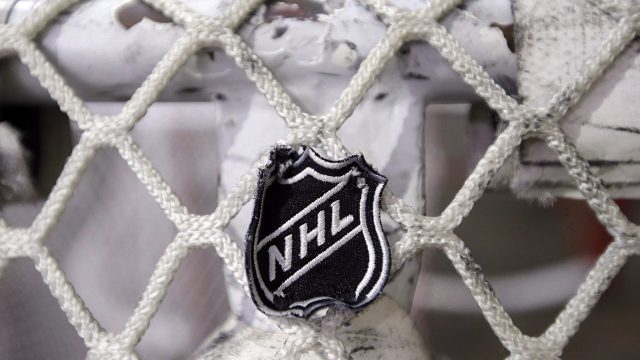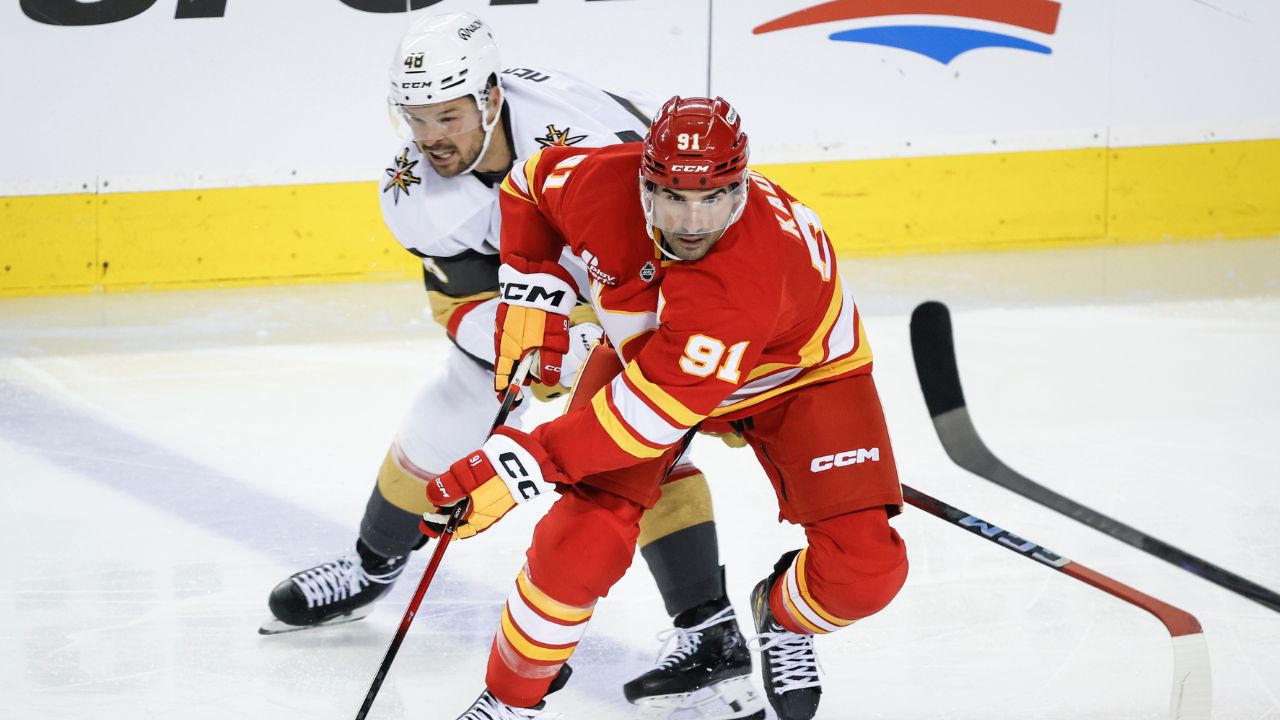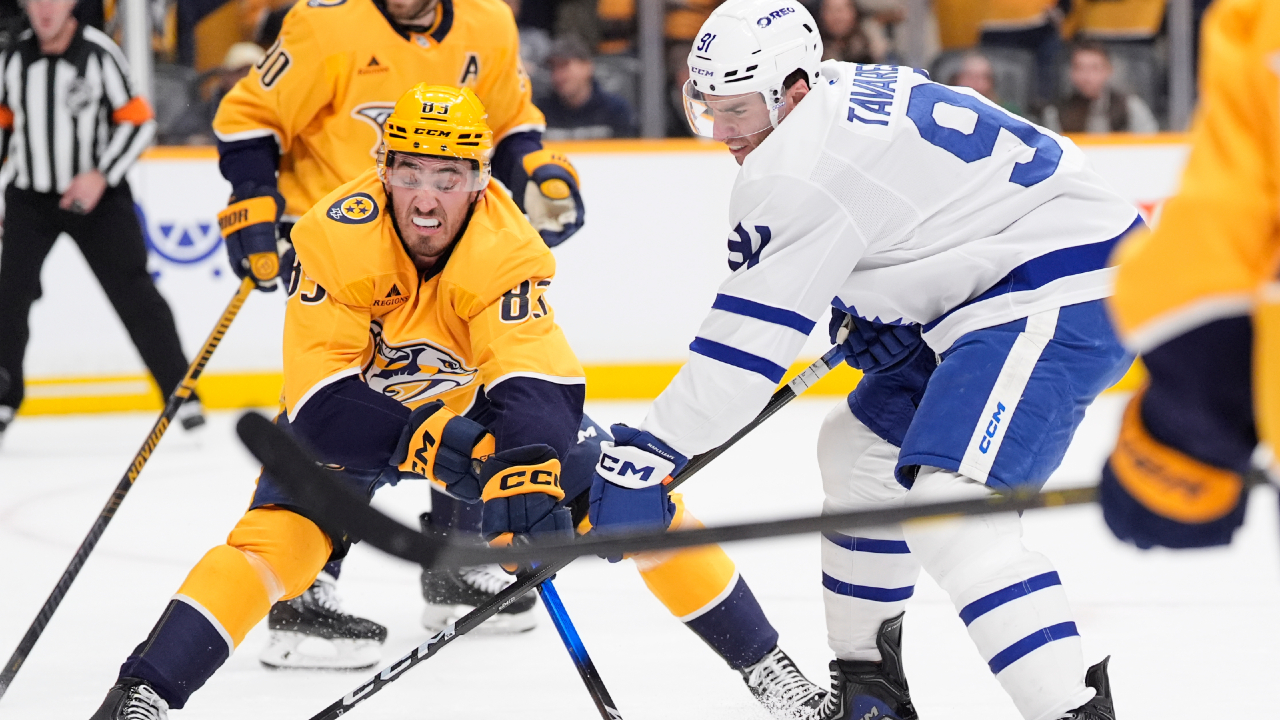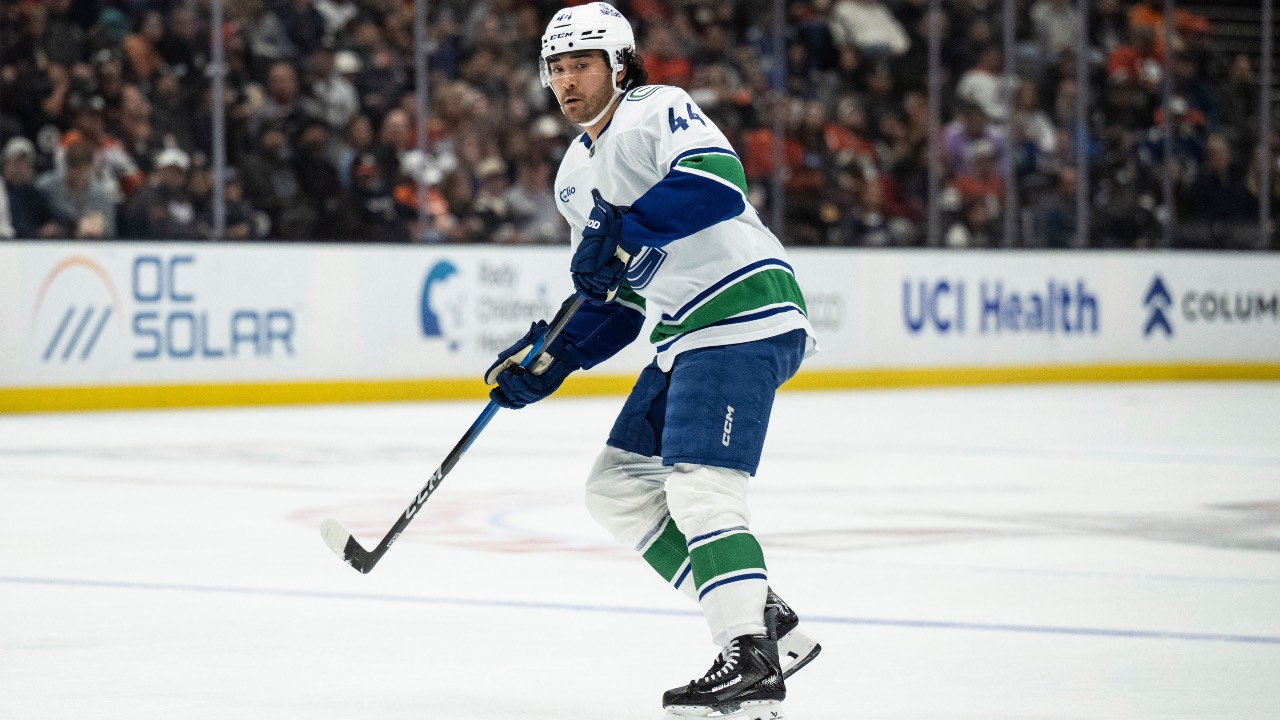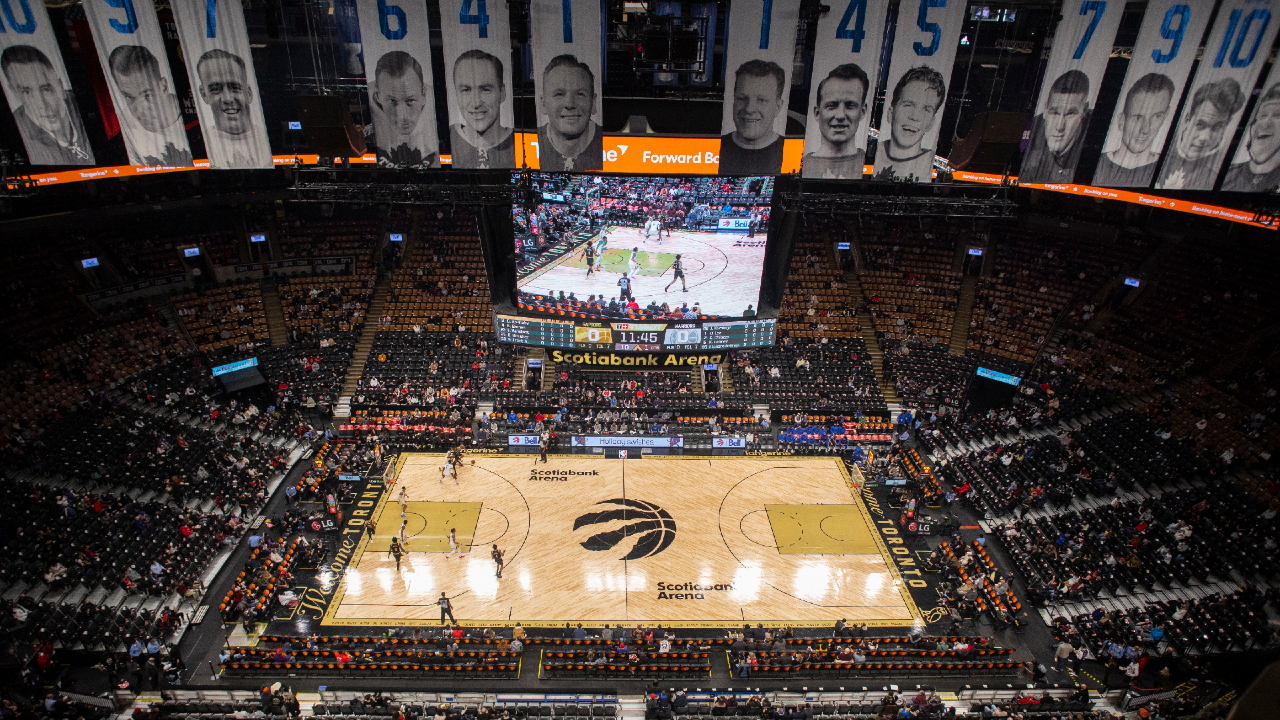
Sports as we know it are on pause, again, kind of.
COVID-19 outbreaks are impacting every major sports league in North America. But unlike in March of 2020 when sports shut down, the leagues are determined to not pause play indefinitely so as to not pause their bottom line.
Omicron has become the dominant variant amongst athletes who are testing positive, but it has elicited different reactions and responses among the three major North American sports leagues midway through their respective seasons.
This is our biggest wave of Covid yet, and it’s certainly not contained to sports. But what has been made abundantly clear is leagues are most accountable to their players and their owners. That’s who these decisions have been made for. It certainly doesn’t benefit the fans to deliver a watered-down product.
The NFL and NBA are playing essentially pre-season line ups for games with playoff implications, that people bet money on and spend money to watch. The NHL started its Christmas break early after already postponing 50 games and announcing that NHL players will no longer be heading to the Olympics.
Sports being back in the way we remembered them had us in a state of denial that Covid was over. Now, sports is the microcosm for what is going on in society and is not allowing us to escape the fact that we’re all vulnerable to be infected, extending this pandemic.
But that doesn’t mean these leagues don’t owe it to the communities they represent to balance profit and the pandemic responsibly.
There is a temptation in sports just to ignore the realities of the pandemic and make decisions solely based on delivering their product. It’s been floated, at this point, that we should abandon testing altogether.
Red Wings GM Steve Yzerman is asking why the NHL is testing vaccinated players if they don’t have symptoms.
He said most of the cases across the league are at worst a mild cold. pic.twitter.com/vhwtrF3zCC
— Brad Galli (@BradGalli) December 18, 2021
Players aren’t an island unto themselves; they have families and interact with hundreds of support staff who help them do their jobs, who all also have families. Even if we wanted to turn a blind eye to the realities of the pandemic for the small population that is athletes, what does that mean for the people in their sphere of influence? And what type of behaviour would they be modelling for the greater population?
As members of society in a global pandemic, we all have a moral obligation to adhere to the social contract that states even if you have the privilege of not being adversely impacted you should think collectively and do what’s in the best interest of everyone.
So, for sports leagues, that means doing your best to keep your players safe and control the spread while also keeping the business of sport afloat, as it is its own sub-economy that many people depend on.
Only time will tell how well the NFL, NBA, and NHL balance those mutually exclusive goals.
To help put the leagues’ protocols in context, I touched base with Dr. Andrew Morris, who is a Professor of Medicine at the University of Toronto and the Medical Director of the Sinai Health System-University Health Network Antimicrobial Stewardship Program.
Here’s a portion of that exchange, edited for clarity.
Sportsnet.ca: How would you grade the NHL’s, NBA’s and NFL’s current protocols and recent response to the rise in COVID-19 cases?
Dr. Andrew Morris: The NHL and NBA have been fairly comparable for how they are dealing with Covid.
They both rely heavily on testing, contact tracing, isolation/quarantining, and the NHL in particular is starting to put pre-game testing in place (on a case-by-case), although they would be wise to standardize this; this is based on the new realities of Omicron which converts from negative test to positive test very quickly.
The NBA’s (or at least Adam Silver’s) belief that they need to just ignore the realities of Omicron are going to strain either their personnel’s health or the quality of the game — hence my belief that I can soon be eligible for most NBA teams with my mid-range game.
Some might think that the NFL is being less stringent or taking things less seriously, but I don’t think so.
They are upping their mask, distancing, and gathering game substantially. They are isolating infected players. But they think they can play through all this because most players won’t be symptomatic and so are only testing unvaxed and symptomatic players. They are putting a lot of faith that they can reduce and catch spread by this strategy and are, I think, ignoring what we have observed — that this virus rips through tightly-knit communities, and it might be really difficult to avoid spread.
Editor’s Note: The COVID-19 situation, in sports and around the world, is constantly evolving. Readers in Canada can consult the country’s public health website for the latest.
However, because it is an outdoor game, if they can keep their change-rooms safe, they might be able to just pull this off. Maybe.
They obviously are all making business decisions. That is not unlike what most governments are starting to consider or implement: Ways to keep people working through Omicron, because otherwise we won’t have staff. Test-to-stay in asymptomatic (people) in health care will be like the test-to-play in sports.
In the end, pro sports figured it out doing the stuff that makes sense. But as we have seen so far, Omicron is our most formidable foe and trying to avoid infections altogether might be futile — even if we can postpone them.
Sportsnet: What would your advice be to pro sports leagues and teams on how best to manage the current COVID-19 situation?
Dr. Morris: Risk of spread doesn’t correlate with symptoms at all, so don’t trust symptoms. Do as much as possible to educate your teams and personnel. Use HEPA filters, ventilation, and high-quality masks as much as possible. Test their households regularly too.
Sportsnet: What can greater society learn from the ongoing spread in pro sports?
Dr. Morris: It is clear that Omicron is a different beast because of its high transmissibility. But pro sports see themselves akin to healthcare: high stakes that must do as much as possible to go on. The only difference: others’ lives aren’t at stake.
Because this is all happening so quickly, we don’t know what the right strategy is. Sports is using a different risk-benefit calculus than governments need to take regarding healthcare. My guess: how sports leagues fare in the next few weeks will be very informative moving forward, just as they were previously.
Here’s a look at what the leagues are doing, why they are doing it and the impacts their responses have had so far.
National Football League
Players in health and safety protocol: As of Dec. 22, more than 180 players were in the league’s protocol, with 151 of those coming in the last seven days alone.
Impact: The Omicron variant hit the league hard at the end of Week 14, which created a surge of more than 150 positive cases in Week 15 and prompted the first three schedule changes of the season.
Response: The NFL is responding to the new wave by loosening protocols and testing players less.
The NFL has updated its pandemic protocols, allowing vaccinated players to return from quarantine more quickly if they’re asymptomatic and testing them less regularly.
Protocols: To start the season, vaccinated individuals were tested weekly and unvaccinated were tested daily. That of course doesn’t include players who have tested positive for COVID-19, as once they have tested positive, they are exempt from testing for 90 days thereafter — which, at this point, is the rest of the season.
The league is no longer testing vaccinated players who are asymptomatic. Only if a vaccinated player or staff member reports symptoms will they be required to test. There will, however, be spot testing for position groups who have been in close contact to a positive test.
Even with the new testing cadence, more NFL players (47) tested positive Monday than did last Monday (37).
The changes also include limiting in-person interactions among players and staff, and requiring masks indoors regardless of vaccination status, holding virtual meetings when possible and eating separately.
The league has also now mandated that all Tier 1 and Tier 2 employees, including coaches and staff members, receive boosters by Dec. 27. Players have been encouraged to get vaccines and boosters, but they are not required to do so, according to the league’s agreement with the NFLPA.
The NFL is asking teams to continue with the new protocols at least through the early portion of next week.
A notable dynamic: Sources say the NFLPA has received feedback that a majority of players want to eliminate COVID protocols altogether. No more testing, quarantining, etc. That sentiment isn’t shared by union leadership, which has continued to advocate for daily testing.
— Tom Pelissero (@TomPelissero) December 17, 2021
The rationale: There is an argument that most of the players are fully vaccinated and asymptotic so there is really minimal risk.
The problem: The players are going to be incentivized to not report symptoms in order to play without being tested. In a sport without guaranteed contracts, players played with head trauma. They’ll definitely play with the sniffles.
The good news: A nice unintended consequence is, as of Monday, you would have been able to watch the NFL on 9 of the last 11 days. The fact you only need to play one game a week gives the NFL wiggle room.
The NFL also has it easier than the NBA or NHL because of what we know about outdoor vs. indoor spread.
National Basketball Association
Players in health and safety protocol:In the first six weeks of the season, 16 players entered the league’s protocols. As of Dec. 22, a total of 94 players were currently in them.
Impact: This week, seven games have been postponed due to a spike in positive COVID-19 cases. In October and November, 17 NBA players were put in the health and safety protocols. For the upcoming Christmas Day games, 45 players are currently in the league protocols, including Luka Doncic, Giannis Antetokounmpo, Trae Young, Kevin Durant, Kyrie Irving and Andrew Wiggins.
Response: The league mandates having at least eight healthy players in order to play a game. But barely meeting that threshold is not ideal from the league’s perspective.
The NBA and NBAPA recently agreed to allow teams to sign replacement players via a hardship exemption. The rules went into effect Sunday night for teams short-handed by COVID-19 specifically. They state you can bring in a player for each player lost due to COVID-19 and those additional salaries will not count against the salary cap or luxury tax, removing a potential financial penalty.
Prior to this, some teams would have likely preferred to forfeit a game and not have their salary cap and luxury tax impacted — and have a better chance of winning when their team is once again healthy. This was true especially for road games, where the team wouldn’t lose the gate compensation that comes with ticket sales.
Protocols: The NBA has been effectively only testing symptomatic players, like the NFL is now, all regular season. They tested once a week for two weeks during training camp. Then tested unvaccinated players daily and didn’t test vaccinated players at all unless they had symptoms. The league will start testing players more frequently after Christmas, something that was already planned due to the increase of players gathering with families during the holidays.
Once a player tests positive they have to test negative twice in a 24-hour period to come out of the health and safety protocol.
After a surge in postponements towards the end of December, the league and the players’ association were reportedly nearing an agreement to lessen the quarantine period for Covid-positive players, similar to the NFL’s latest plan.
The rationale: Adam Silver made the case to Malika Andrews on Tuesday during ESPN’sNBA Today by saying there were “no plans right now to pause the season. We of course have looked at all the options but frankly we’re having trouble with coming up with what the logic would be behind pausing right now.
“As we look through these cases I think we’re finding ourselves where we sort of knew we were going to get to for the past several months and that this virus will not be eradicated and we’re going to have to learn to live with it.”
The problem: What is the point of the league forcing their way through this for us to watch Jevon Carter play big minutes on Christmas Day? If you don’t know who Carter is, that’s entirely the point. Continuing to play with players dropping at this rate impacts the competitive balance and the entertainment value of the league. If you thought the regular season was on life support, it’s officially dead right now.
The good news: The G league exists. The fact that these teams had ready-made replacements who understood, theoretically, the systems and culture of the parent clubs saved them. This is a good story for all the unsung players who are getting an opportunity to make money, turn heads and realize a lifelong dream of playing in the NBA.
National Hockey League
Players in health and safety protocol: As of Dec. 23, a total of 156 players were in the league’s protocol, with 89 of those coming in the last seven days.
Impact: For the time being, the Toronto Maple Leafs, Ottawa Senators, Vancouver Canucks, Edmonton Oilers and Calgary Flames once again have capacity limits in their arenas while the Montreal Canadiens will again not play in front of fans.
Response: The league has paused its season after already postponing 50 games.
The NHL and NHLPA have come to the agreement that NHL players will no longer be heading to the Olympics, robbing the players of the chance to compete on the big stage for the first time since 2014. Now with no Olympics, there is a three-week gap in February to make up for lost games.
The league has postponed all games from Dec. 22 to Dec. 26 and will use the scheduled break for the Olympics, Feb. 6-22, to reschedule games. The NHL All-Star Game is still scheduled for Feb. 5.
Protocols: The NHL already had the most rigorous plan as they test everyone daily at least once and on gamedays potentially twice. The recent COVID-19 breakout across the NHL has forced the league to implement stricter policies through January 7th that are similar to the protocols in place last season.
The enhanced protocols were put into effect immediately and will be followed by an evaluation of their impact.
The rationale: COVID-19 has had a material impact on the season. Since the players and owners have a 50/50 split in revenues, even the players understand that getting through this season with as many games played as possible is paramount. Not going to the Olympics is the league’s best and safest way to do that. It might not end up mattering as, at this point, a one-year delay of the Beijing Olympics isn’t out of the realm of possibility if the numbers continue to spiral out of control.
The problem: The NHL’s challenge is the trickiest to navigate. Cross-border travel for the seven Canadian teams and their opponents complicates things. Those Canadian teams are also across three different divisions, making things even trickier for the schedule-maker if cross-border travel regulations change at some point during the season.
Also, the ventilation in a hockey rink with boards is far from ideal.
The February break is fortuitous, but from a competitive balance standpoint you can’t have only the teams hit hard by Covid playing while the teams who haven’t missed many games sit virtually idle. So, a reshuffling of the entire league calendar for all 32 teams is likely coming.
The NHL’s plan isn’t perfect. They have said they’re not going to the Olympics, but you didn’t hear them say anything about not having an All-Star weekend in Las Vegas. Bringing people together for an exhibition when you could be working to get additional regular season games in or having the players quarantine to try to flatten the spread isn’t ideal for player health, but it is for revenue.
The good news is every player in the NHL is vaccinated other than one, Tyler Bertuzzi of the Detroit Red Wings. The players are by and large putting themselves in an optimal position for success.
The regular season is due to end on April 29, which gives the league 119 days to finish the season.


